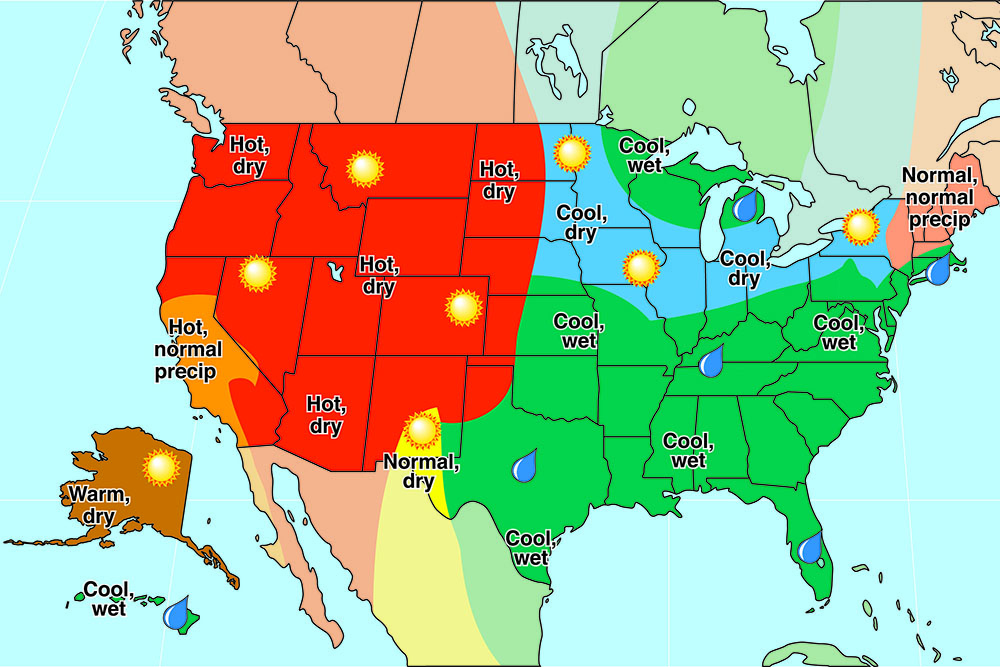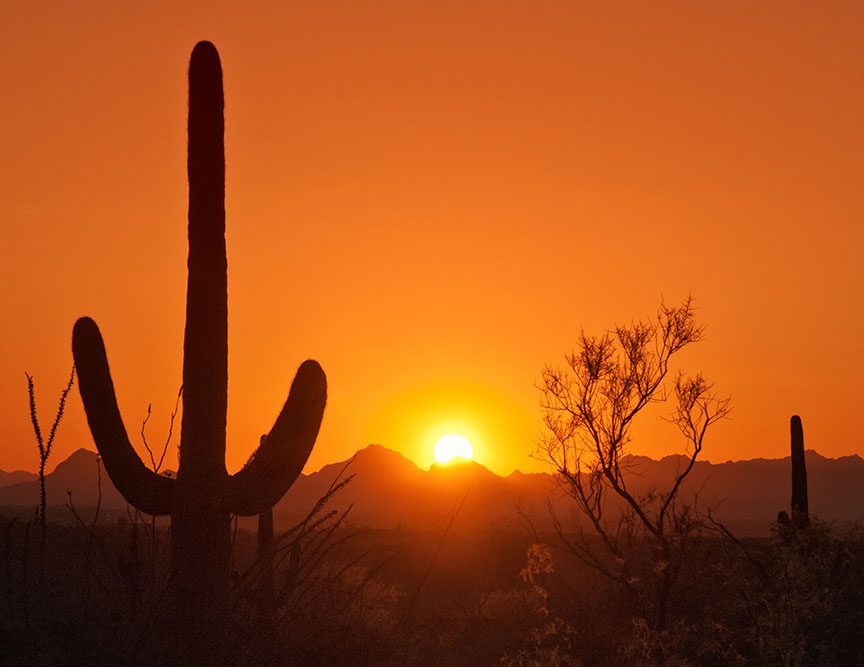By Jim Headley
Peter Geiger, editor of Farmers’ Almanac, said it will be hot in Arizona this July.
While that really doesn’t come as a surprise, Geiger said it will be downright “sizzling” across the Southwest.
“I don’t get to talk to very many people in Arizona,” Geiger said. “I will not disappoint you this summer – we use the word ‘sizzling’ and with average precipitation.”
A competing publication with an even longer history, The Old Farmer’s Almanac also is specifically predicting the month of July will be hotter and drier than normal in the Valley of the Sun.
Janice Stillman, editor of The Old Farmer’s Almanac, said the company researched and developed a weather forecast in February 2018 that indicated this July will be slightly hotter than normal and with below-normal rainfall.
The forecast is produced by Michael Steinberg.
“They are also predicting the monsoon for later in summer, probably more into September and October,” Stillman said. “We have also made a similar prediction for above-normal rainfall in September and October.”
Geiger said Farmers’ Almanac, established in 1818, predicts the weather for three-day segments throughout the year.
“We do talk about monsoon showers July 4 through the 7th for parts of Arizona,” Geiger said. “We talk about more monsoon storms in Arizona from July 24 to 27. I don’t know if that’s unusual. On average, you will get four rainy days throughout the month of July and you get about an inch of rain.”
Spring in Arizona was “cooler than normal,” which is exactly what Farmer’s Almanac predicted in its 2019 edition.
Stillman said it’s encouraging when The Old Farmer’s Almanac, established in 1792, comes out with a forecast more than a year in advance that matches the much later National Weather Service forecasts.
“It’s our long-range philosophy and the technology that is applied,” she said.

How do Farmers’ Almanac and The Old Farmer’s Almanac make such long-range predictions with accuracy?
“It is done using a mathematical formula that was developed in the early 1800s by our first editor, David Young,” Peter Geiger said of the Farmer’s Almanac. “It is applied to sunspot activity, point of positions of the Earth and the effect the moon has on the Earth. Sunspot activity is critically important. We are told that we are maybe 75 to 85 percent accurate,” he said.
Over at The Old Farmer’s Almanac, it’s similar.
“We use three scientific disciplines,” Janice Stillman said, “which include solar sun activity, the sunspots, which are magnetic storms on the surface of the sun that occur in cycles of 11 years on average. We are in the midst of one of the quietest cycles in more than 100 years. There is almost no solar activity. We also use climatology, which is the study of prevailing conditions over long periods of time, decades and even centuries. We also take into consideration greenhouse gasses and carbon influence in the atmosphere.”
The strange thing is, Stillman said, we should be experiencing a severe cooling period with slow sunspot activity. Instead, with global climate change occurring, things are still heating up when they should be cooling down.
“You don’t know until you get through it. I know the global temperatures are rising but it’s not the same all over the globe all of the time. We do believe that solar cycles have something to do with the warming oceans and the jet stream being influenced by the meltdown in the artic,” she said.
Geiger said because Farmers’ Almanac’s forecasts are based on statistical data, climate change is not considered a factor when forecasts are made. The planet’s climate changes on a regular basis anyway, he said.
“Are we shooting to be totally hot and never cool again? I don’t know,” Geiger said. “Climate change is not as factorable as is sunspot activity and planet position – that stuff you can measure. Climate change is always happening. You really have to look back hundreds of thousands of years to see what’s happened to the climate on the planet.”
Almanac.com
FarmersAlmanac.com
________________________________
This story is in the July issue of InMaricopa.







![Elena Trails releases home renderings An image of one of 56 elevation renderings submitted to Maricopa's planning department for the Elena Trails subdivison. The developer plans to construct 14 different floor plans, with four elevation styles per plan. [City of Maricopa]](https://www.inmaricopa.com/wp-content/uploads/2024/04/city-041724-elena-trails-rendering-218x150.jpg)

![Affordable apartments planned near ‘Restaurant Row’ A blue square highlights the area of the proposed affordable housing development and "Restaurant Row" sitting south of city hall and the Maricopa Police Department. Preliminary architectural drawings were not yet available. [City of Maricopa]](https://www.inmaricopa.com/wp-content/uploads/2024/04/041724-affordable-housing-project-restaurant-row-218x150.jpg)








